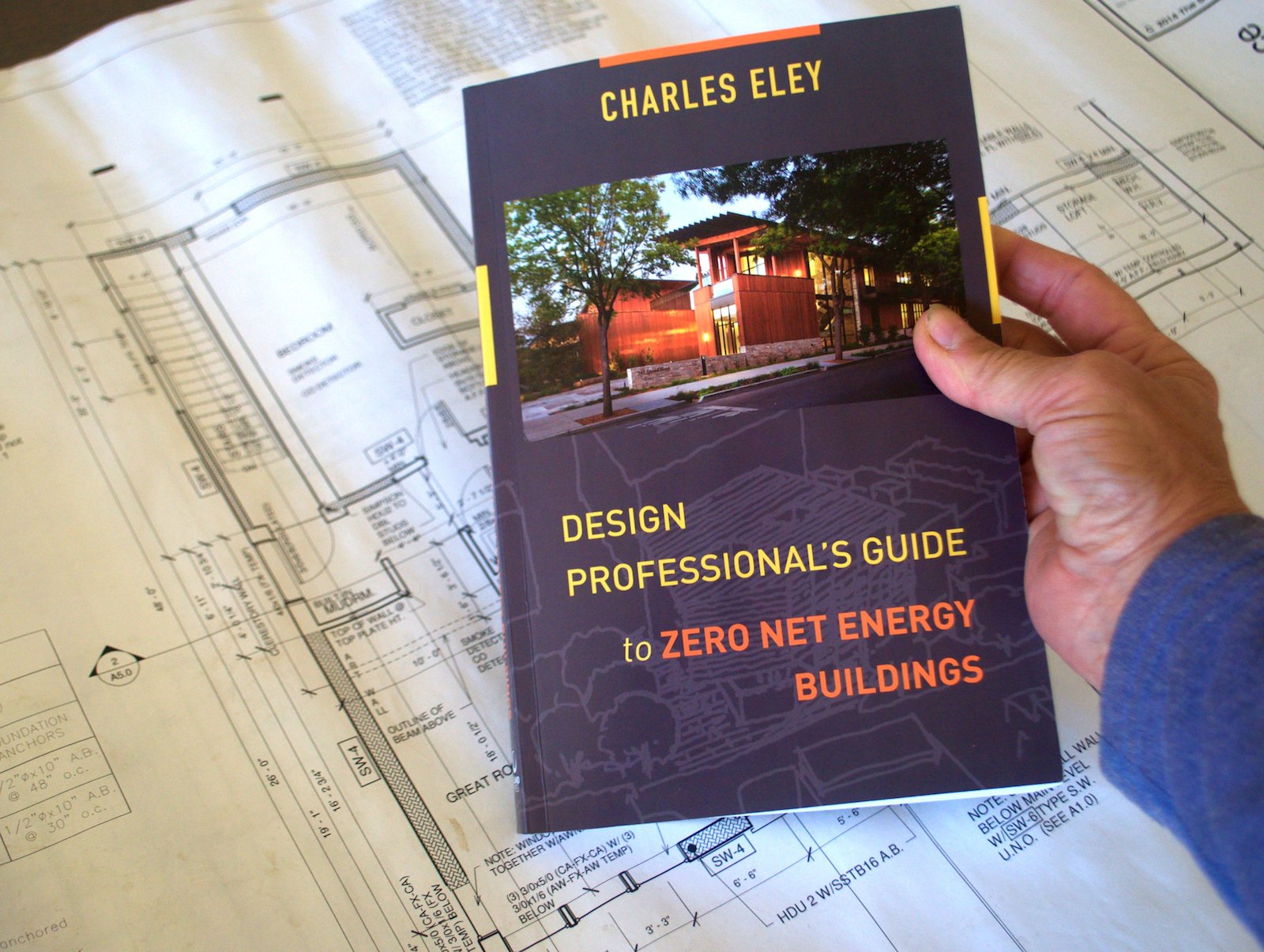Architects and engineers like to perpetuate a friendly feud: art versus science, expression versus function. But despite their differing priorities, they find a way to work together that often results in buildings that are both visually stunning and remarkably functional. Imagine the benefit of being both architect AND engineer. Charles Eley, FAIA, PE, has been a leader in both professions for more than 40 years. Through much of his career, he has focused on energy efficiency in schools and other commercial buildings. He’s also been involved in developing codes and professional standards. Now he’s sharing his knowledge and experience in a new book Design Professional’s Guide to Zero Net Energy Buildings.
Whether you know a lot about zero energy commercial buildings or if you know nothing about them, every designer and builder should read this book. Eley offers a broad context paired with practical details and strategies needed to successfully design and build zero energy and near zero energy buildings. While he describes basic principles that can apply to homes, most of the applications pertain to commercial buildings.
In the book, Eley emphasizes that the first step is minimizing energy use through smart design and energy efficient technologies. Although well illustrated, this is not a picture book. It offers practitioners specific details covering the entire range of structures and systems: building form, envelope, daylighting, thermal comfort, photovoltaics, energy modeling, financing, metrics, increasing scale, and much more. New buildings that employ these techniques are showcased, including the Rocky Mountain Institute’s Innovation Center.
Aside from all the concrete, metal, and glass, there is also a softer side –the human element in the design and construction process. Eley suggests following the Integrated Project Delivery system for its special appeal to those who are managing complex projects. He discusses business, financing, and decision-making issues to be considered. Very often, the success of a project rests on these interactions within the project team.
If you’re a design or construction professional who wants to steer modern society to the future, this book will shine a light on that path. It’s the path to zero energy buildings.
From the book jacket:
How we design buildings today will determine if the effects of climate changes are manageable or catastrophic. Charles Eley delivers a comprehensive and detailed blueprint for designing Zero Net Energy (ZNE) buildings today that will effectively shape tomorrow’s built environment. It belongs in every conscientious designer’s library.
—Ed Mazria, Founder of Architecture 203

